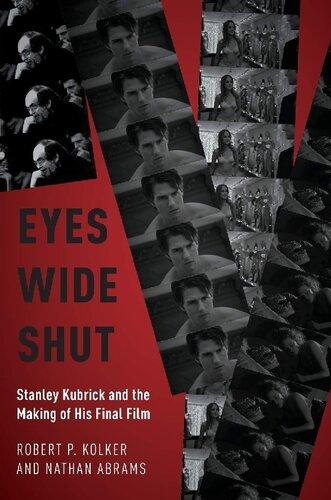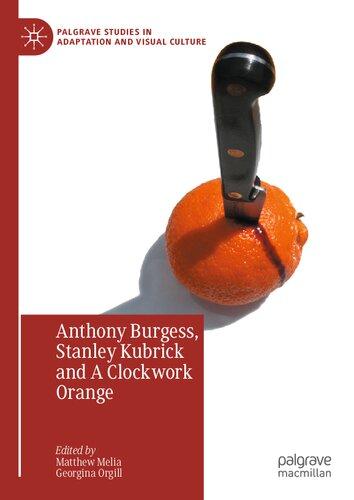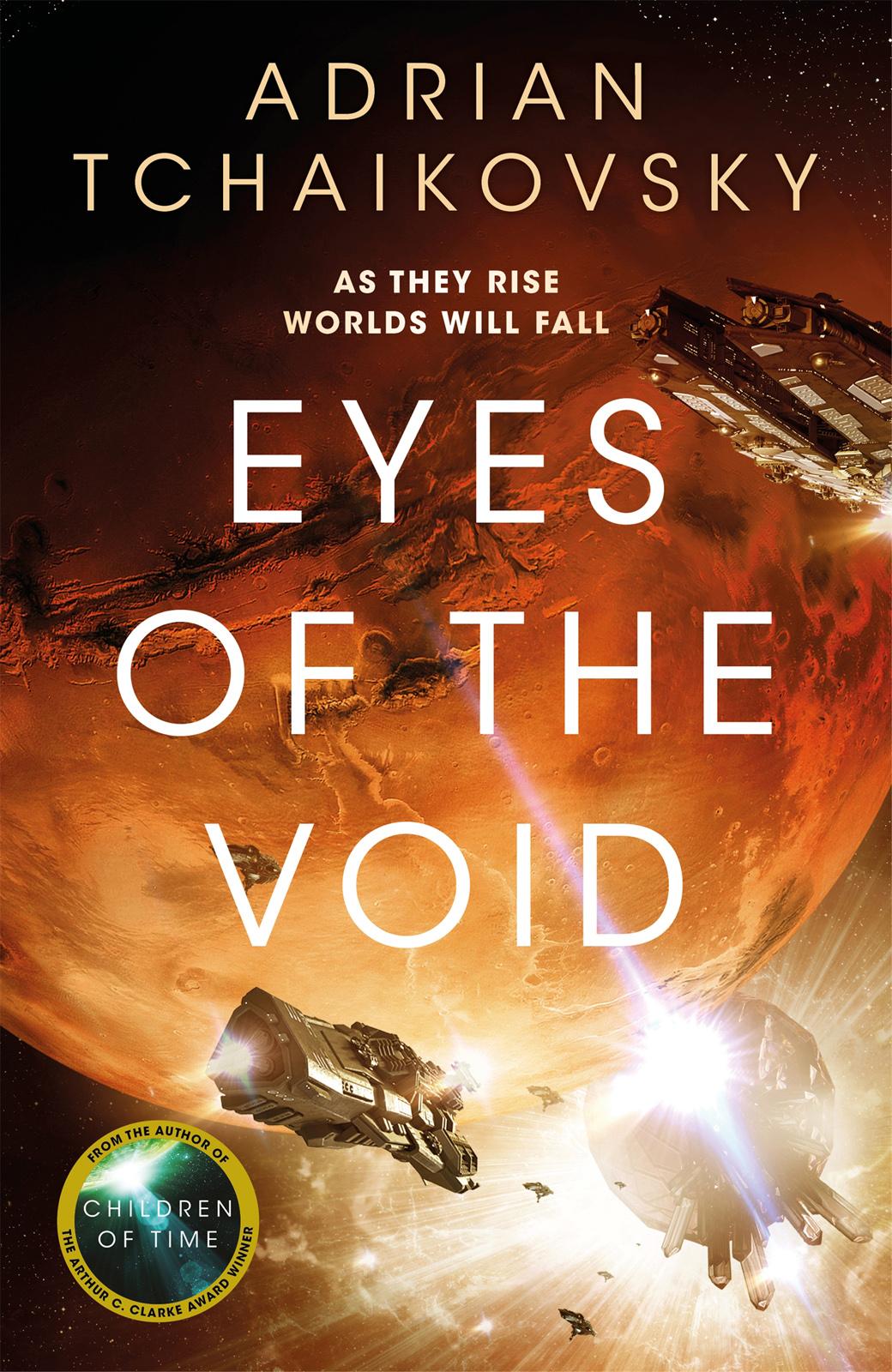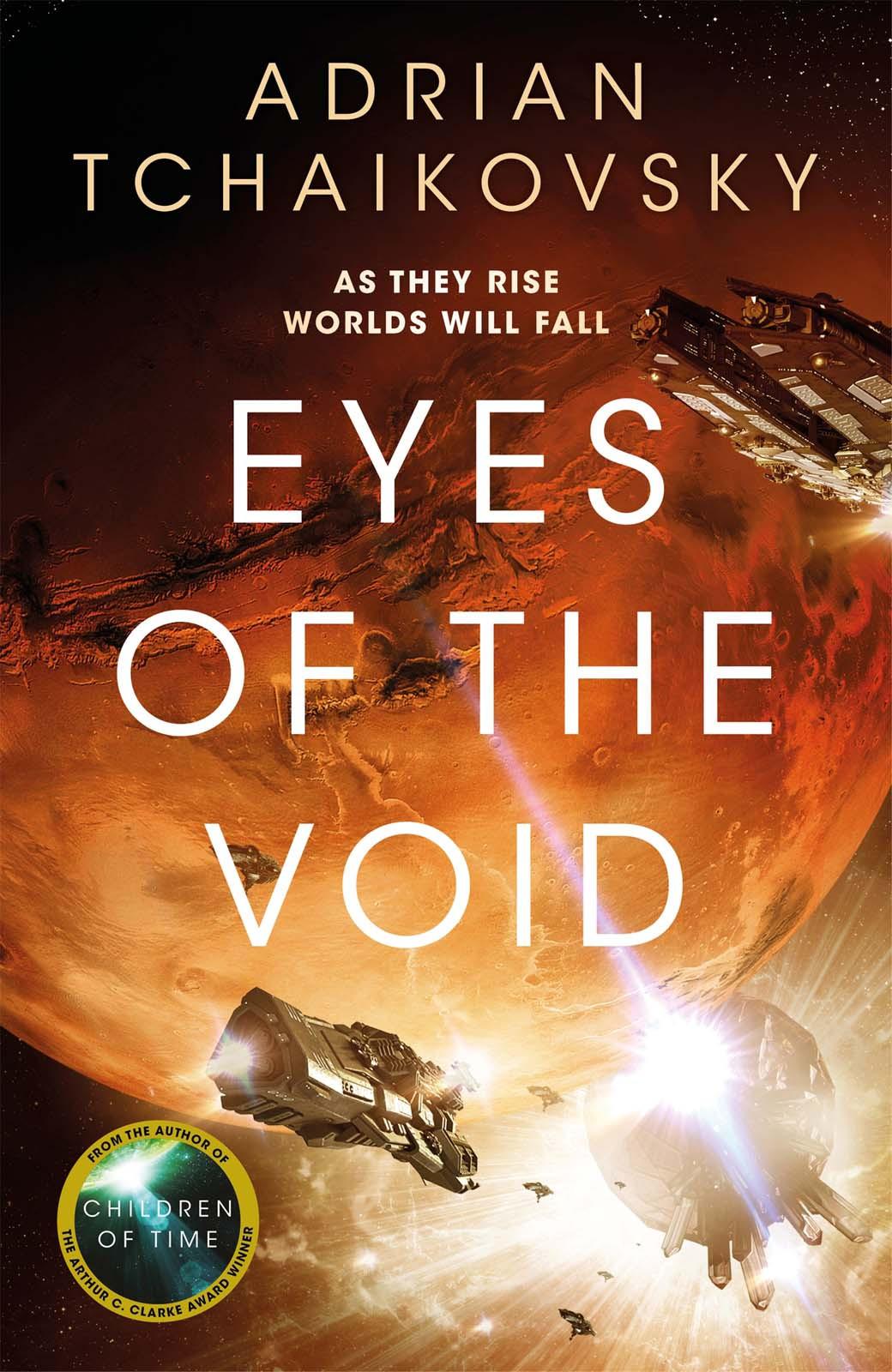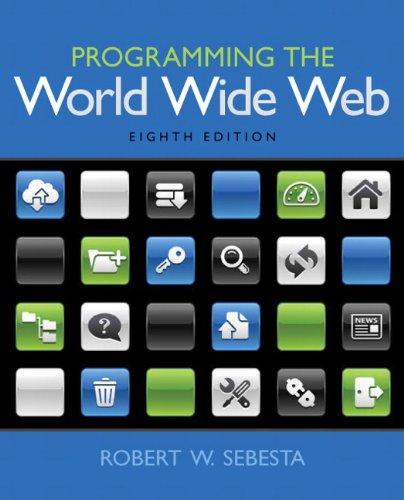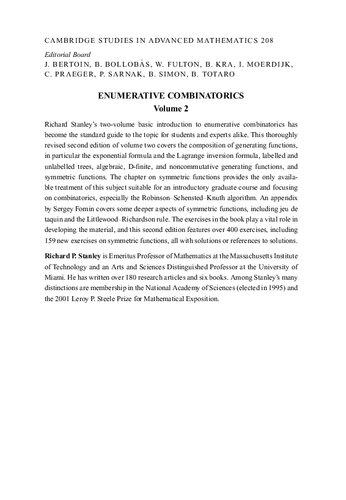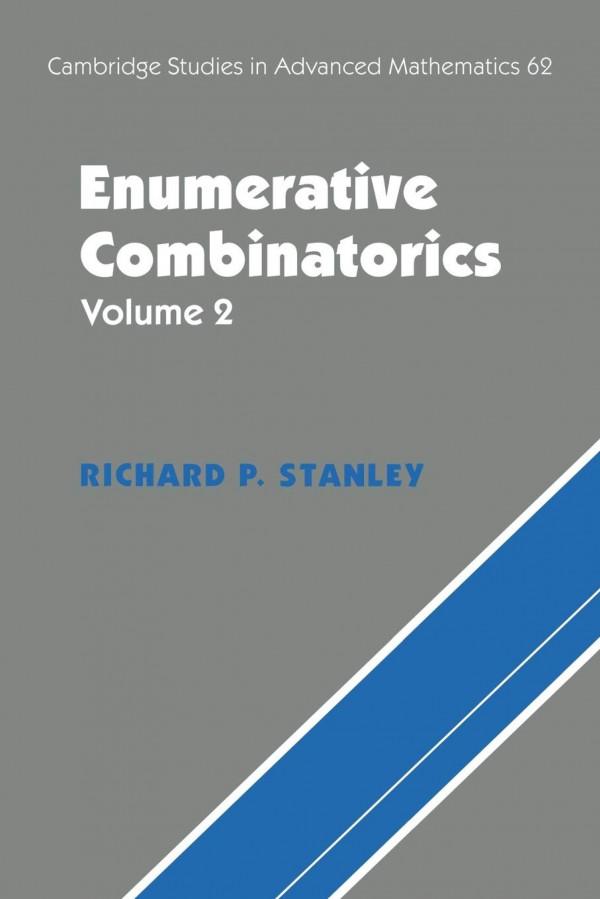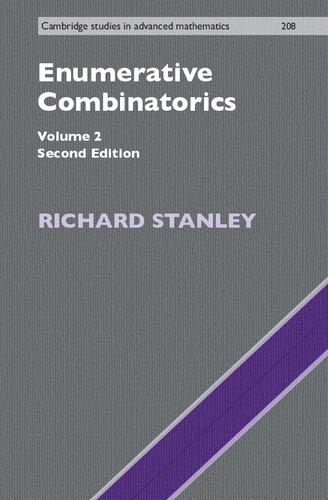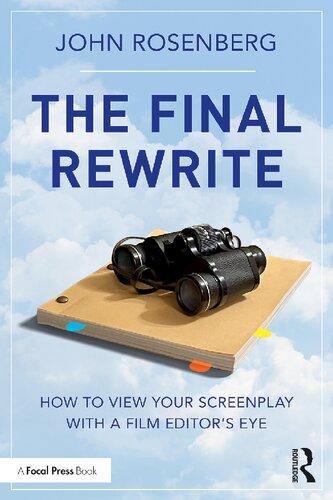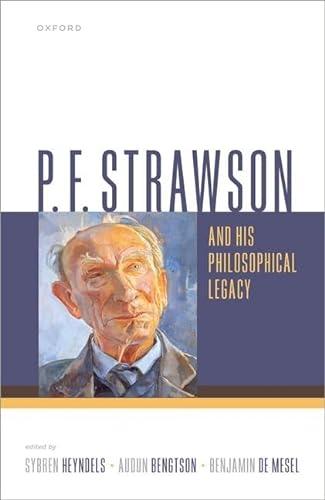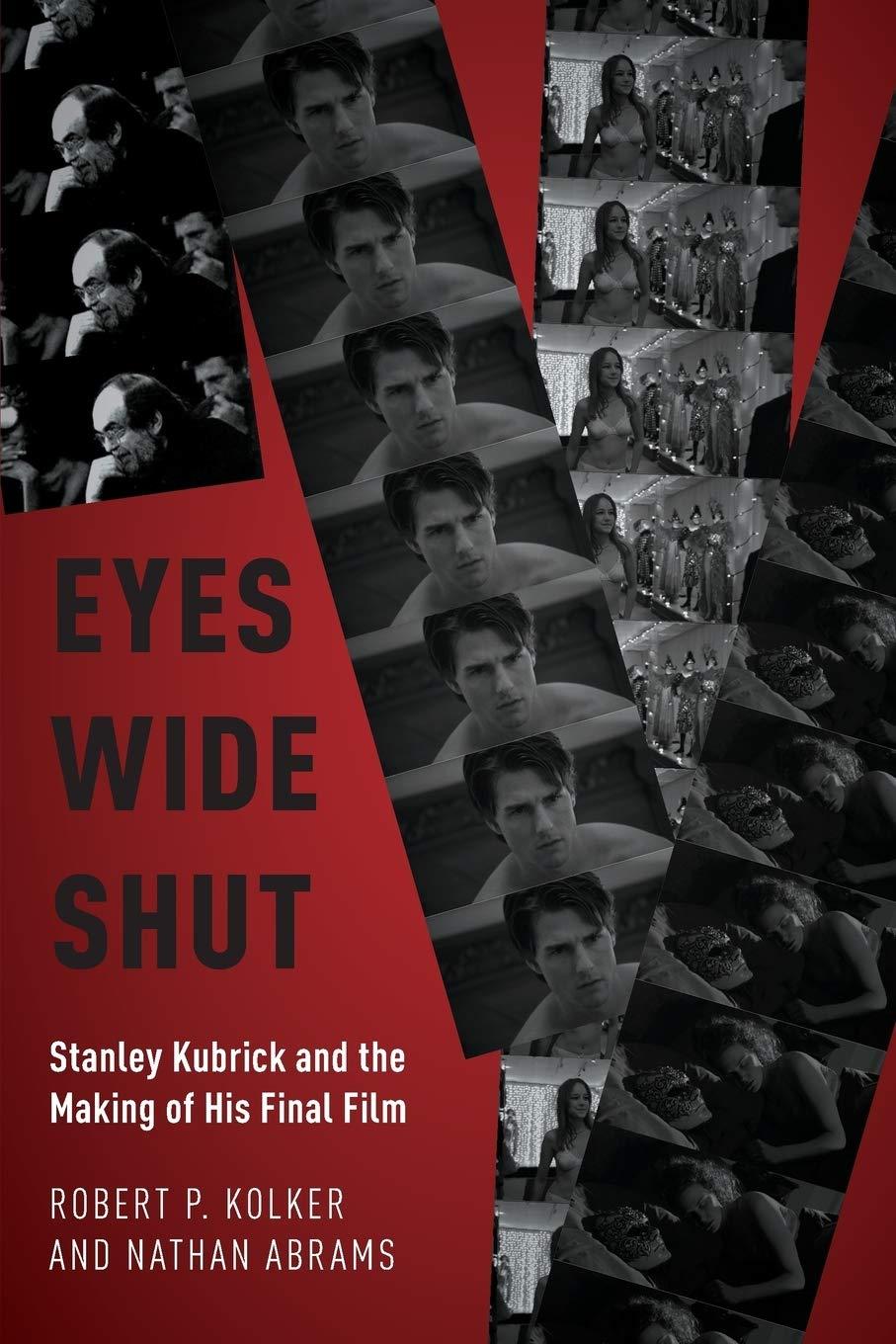1
Oxford University Press is a department of the University of Oxford. It furthers the University’s objective of excellence in research, scholarship, and education by publishing worldwide. Oxford is a registered trade mark of Oxford University Press in the UK and certain other countries.
Published in the United States of America by Oxford University Press 198 Madison Avenue, New York, NY 10016, United States of America.
© Oxford University Press 2019
All rights reserved. No part of this publication may be reproduced, stored in a retrieval system, or transmitted, in any form or by any means, without the prior permission in writing of Oxford University Press, or as expressly permitted by law, by license, or under terms agreed with the appropriate reproduction rights organization. Inquiries concerning reproduction outside the scope of the above should be sent to the Rights Department, Oxford University Press, at the address above.
You must not circulate this work in any other form and you must impose this same condition on any acquirer.
Library of Congress Cataloging-in-Publication Data
Names: Kolker, Robert Phillip, author. | Abrams, Nathan, author.
Title: Eyes wide shut : Stanley Kubrick and the making of his final film / Robert P. Kolker, Nathan Abrams.
Description: New York City : Oxford University Press, 2019. | Includes bibliographical references and index. | Includes filmography.
Identifiers: LCCN 2018043518 (print) | LCCN 2018045328 (ebook) | ISBN 9780190678043 (updf) | ISBN 9780190678050 (epub) | ISBN 9780190678067 (oso) | ISBN 9780190678029 (cloth : alk. paper) | ISBN 9780190678036 (pbk.: alk. paper)
Subjects: LCSH: Eyes wide shut (Motion picture) | Kubrick, Stanley—Criticism and interpretation.
Classification: LCC PN1997. E98 (ebook) | LCC PN1997. E98 K65 2019 (print) | DDC 791.43/72—dc23
LC record available at https://lccn.loc.gov/2018043518
9 8 7 6 5 4 3 2 1
Paperback printed by WebCom, Inc., Canada
Hardback printed by Bridgeport National Bindery, Inc., United States of America
Contents
Preface vii
Acknowledgments ix
Chronology xi
Introduction 1
1: “It’s Probably Going to Be the Hardest Film to Make”: Stanley Kubrick, Arthur Schnitzler, and the Long Gestation of Eyes Wide Shut 13
2: The Jewish Tailor: Writing the Screenplay of Eyes Wide Shut 41
3: The Knishery: Preproduction 63
4: “They Absolutely Took Their Skin Off”: The Production of Eyes Wide Shut 85
5: “Mayhem”: Postproduction 113
6: “A Genuine Work of Honest Art”: The Reception and Afterlife of Eyes Wide Shut 133
7: Non-Submersible Units: An Analysis of Key Scenes in Eyes Wide Shut 151
Epilogue: Eyes Wide Shut, Kubrick’s Films, and the History of Cinema 185
Notes 195
Filmography 215
Select Bibliography 221
Index 225
Preface
The films of Stanley Kubrick remain alive, vital, and prescient not only in our memories, but as a strong cultural force. From Fear and Desire, Killer’s Kiss, The Killing, through Paths of Glory, Spartacus, Lolita, Dr. Strangelove, 2001: A Space Odyssey, A Clockwork Orange, Barry Lyndon, The Shining, and Full Metal Jacket, his films have startled us, mystified us, and continually offered sounds, images, and, most of all, visualized ideas that keep us returning to them over and over again. We cannot forget them. Our book attempts to understand the power of Kubrick’s work, and the man behind it, to get closer to his creative process through one film in particular, his last, Eyes Wide Shut. Though met with some scorn when it was released in 1999, just after Kubrick’s death, it, like so many of his films, has gained in stature over the years. There is something so typically Kubrickian and, as always with his films, uncanny about its mixture of technical virtuosity with the quotidian, even the banal, and its mysterious aura at the borderline between wake and sleep and dream, sexual longing and frustration, an action hero celebrity playing a humbled man. Though so much quieter, even reserved, than previous Kubrick films, Eyes Wide Shut is all but hypnotic with its assured rhythms and troubling, dreamlike atmosphere. It is a film deliberately made so that you can’t quite get it out of your head.
Our work is an attempt to create an archeology of the film, uncovering its buried layers, to understand its evolution: its prehistory, development and production, reception and afterlife. It is based mostly on research into the records of the film’s production held in the Stanley Kubrick Archive at the University of the Arts in London, supplemented by other materials and interviews. We also offer a new reading of the film, a critical analysis of its key scenes and what it is about, though, given its complexity, this is always tentative and impossible to be exhaustive. But then so is archival research. While the Archive holds detailed material about all the phases of the making of the film, they are, given Kubrick’s working methods, not total. The Archive is, at the time of this writing, largely missing faxes, which, along with the telephone, were Kubrick’s favorite means of communication. But the material that is there supplies enough to allow us to extrapolate from the archival record a larger
image of the work of a director whose control over his films was more complete than almost any other filmmaker one can think of—“complete total annihilating artistic control,” as Kubrick demanded early in his career.
Our research and analyses have, we hope, enabled us to see Eyes Wide Shut whole and in its parts, to understand and account for its long, long gestation, the struggle with Frederic Raphael over the screenplay, and the amazing detail of its painstaking, exhausting production, all the way through its reception and the conspiracy theories that surround it. Stanley Kubrick thought it his best film. We have tried to show why.
Robert P. Kolker
Earlysville, Virginia
Nathan Abrams Bangor, Wales
Acknowledgments
The authors want to thank the team at the Archives & Special Collections Centre, University of the Arts, London, in particular Manager Sarah Mahurter and Senior Archivists Richard Daniels and Georgina Orgill, for their assistance in not only giving us access to Kubrick’s papers but in helping us to locate specific items and images and obtain permissions for them. Interviews, both in person and in print, were invaluable help in writing this book. Many people involved in the making of Eyes Wide Shut were gracious in giving us their time and thoughts. These include Jan Harlan, Kubrick’s executive producer (and brother-in-law) whose help made this work possible, and Kubrick’s wife, Christiane, whose blessing allowed us to go forth. Kubrick’s assistant Tony Frewin; his former producing partner, James B. Harris; artist Chris Baker; University of Maryland Professor of German Literature Peter U. Beicken; Steadicam operator Peter Cavaciuti; casting director Denise Chamian; assistant producer Brian W. Cook; actresses Victoria Eisermann, Vanessa Fenton, Abigail Good, and Ateeka Poole; Tim Everett, former Director of European Technical Operations for Warner Bros.; actor/director Todd Field; pianist Dominic Harlan; art director Lisa Leone; production designer Kira-Anne Pelican; composer Jocelyn Pook; props man Michael Wolf; Warner Bros. executive Julian Senior; choreographer Yolande Snaith; and cinematographer Larry Smith were generous with their time. There has also been correspondence with actor Tony DeSergio and Katharina Kubrick. There are names missing here, of course. We did reach out to Nicole Kidman and Tom Cruise through their representatives, but to no avail. Others wished to honor Kubrick’s desire for secrecy. A variety of other individuals also provided assistance along the way, including Geoffrey Cocks, Siobhan Donovan, Ian Hunter, Neil Jackson, Peter Krämer, Christopher Loki, Vinnie LoBrutto, Matt Melia, Lawrence Ratna, Filippo Ulivieri, Laurent Vachaud, Leon Vitali, David Wyatt, and the anonymous readers of our proposal and draft manuscript. Finally, we would like to thank Norm Hirschy for bringing this project to fruition after a long gestation period. The team at Oxford University Press,
including Wendy Walker, Leslie Johnson, and Aishwarya Krishnamoorthy have been invaluable in the production of this book.
Finally, we dedicate this book to our wives, Linda and Danielle, and our families and pets. Unfortunately, Elwood the cat died during the writing of this book.
The reproduction of a page from the Eyes Wide Shut script, the measurements of Tom Cruises’s mask, and the photograph of the newsstand with the headlines “FDR Dead,” courtesy of the SK Film Archives LLC, Warner Bros., and University of the Arts, London. The 3D rendering of the orgy set courtesy of Kira-Anne Pelican. The photograph of Kubrick at the orgy courtesy of Abigail Good.
Chronology
1928
Stanley Kubrick is born.
1940s
Does Kubrick read Schnitzler via his father’s library? Or, at Columbia University?
1950
Kubrick is possibly introduced to Schnitzler via Max Ophüls’s La Ronde
1952
Kubrick enters a relationship with Ruth Sobotka. Did she introduce him to Traumnovelle?
1956
Kubrick and his producing partner James B. Harris work on adapting Zweig’s 1913 novella Burning Secret with writer Calder Willingham.
1959
Kirk Douglas claims his psychiatrist introduced Kubrick to Traumnovelle while working on Spartacus.
May: Kubrick invites Schnitzler’s grandson, Peter, to the set of Spartacus.
1968
Kubrick allegedly reads Traumnovelle for the first time.
May 22: Kubrick asks Jay Cocks to secure the rights to the novella.
1970
Kubrick begins to “concentrate” on adapting Traumnovelle
April: Kubrick asks Jan Harlan to acquire the rights, which he does. Harlan makes a rough translation of Schnitzler’s German text. Kubrick buys up every existing copy of the published novel.
1971
May: Warner Bros. announces Kubrick’s next project as “Rhapsody,” an adaptation of Traumnovelle. LA Herald Examiner reports that Kubrick will “write, produce and direct Traumnovelle in England for Warner Bros. release.”
June: Kubrick tells John Hofsess that his next film would be about Napoleon, followed by “an adaptation of Arthur Schnitzler’s A Dream Novel.”
December: Kubrick is already considering transposing Vienna to New York.
1973
Jan Harlan arranges for a one-year extension of his option to acquire the motion picture rights to the novella, at a cost of 5,000DM (approximately $1,500).
Kubrick considers filming Traumnovelle in black and white, as a low-budget arthouse film, set in Dublin, with Woody Allen playing a middle-aged Jewish doctor.
1976
Kubrick writes to Anthony Burgess, possibly with a view to asking him to adapt the novella.
1979/1980
Kubrick considers Steve Martin for the lead role. He also discusses Traumnovelle with Diane Johnson and Michael Herr.
1983
January: Terry Southern works on the script.
1987
Kubrick discusses the novella with John le Carré.
1993
Sydney Pollack suggests Kubrick seriously considered Tom Cruise for Eyes Wide Shut.
1994
Spring/summer: Kubrick approaches Frederic Raphael to write the screenplay. Autumn: Kubrick discusses Traumnovelle with Candia McWilliam.
November: Raphael begins work on screenplay. December: Raphael delivers first draft.
1995
January onwards: Raphael produces further drafts. June/July: Raphael stops work on screenplay; Sara Maitland is approached. When she declines, Kubrick takes over.
December 17: Casting of Tom Cruise and Nicole Kidman is announced. December: Kubrick does additional work on the script until early June 1996.
1996
Kubrick approaches Herr to do a “wash and rinse”; Herr declines. November: Principal photography begins.
1997
Final shooting script, dated February 18. Jocelyn Pook is hired as composer.
1998
February 3: Principal photography ends.
February and March: Kubrick works on the print.
May 15: Reshoots with Tom Cruise and Marie Richardson
June 17: Production ends definitively.
June 1998–March 1999: Kubrick edits the film.
1999
March 2: Screening of Eyes Wide Shut for Warner Bros. executives Terry Semel and Robert Daley, and Tom Cruise and Nicole Kidman.
March 5: Private screening of Eyes Wide Shut at Childwickbury
March 7: Kubrick dies.
March 12: Kubrick is buried at his home at Childwickbury. A small team works to complete the film as per Kubrick’s instructions.
July 16: Eyes Wide Shut is released in the United States.
September: Eyes Wide Shut premieres in Europe at the Venice Film Festival.
Introduction
The film that became Eyes Wide Shut was on Stanley Kubrick’s mind for much of his creative lifetime and it was consistently pushed to the side in favor of other films seemingly very different from what finally appeared in 1999. Once he decided to make it, once Kubrick was ready to make it, there were years in screenwriting, preproduction, shooting, and postproduction. The actual shoot took almost 18 months, the longest in filmmaking history. The making of the film was such a strain on the then 70-year-old filmmaker that he was thoroughly exhausted by the time shooting was finished, let alone editing. He died of heart failure less than one week after he showed the film to its stars, Tom Cruise and Nicole Kidman, and Warner Bros. executives. Despite the strain, Kubrick was quite upbeat about the film. He told his executive producer and brother-in-law Jan Harlan that it was his best work. It certainly is a film very different from those that preceded it, though it is very much a Kubrick film, and like the previous films, it takes many viewings to understand its depths and grasp its enigmas.
Different but the same: Eyes Wide Shut is Kubrick’s summa, a summing up of all the ideas developed across a creative lifetime and in many ways a summing up of the history of film. It is detailed, purposeful, measured, weighty, full of details large and small that, like any Kubrick film, keep delivering new insights on each viewing. Its emotional charge pushes somewhat reluctantly through its elegant, complex form. Like all his work, emotion is gained by active engagement and recollected in tranquility. The lack of overt, easily accessed emotion is one thing that initially disappointed the critics. But with an intensity of engagement, Eyes Wide Shut is a gratifying, fulfilling, masterful job of filmmaking. It repays attention and multiple viewings; it stays in the imagination and the emotions; it circulates and inoculates us against ordinary cinema. Because it is not ordinary.
It is enigmatic, as was its creator. Kubrick famously worked in relative isolation: private, eschewing celebrity, a New York Jewish intellectual living with his German wife and three daughters north of London since the 1960s, making each of his 13 films with a growing obsession for detailed research and meticulous preparation. His biography remains sketchy, despite the growing amount of research in
his archive housed in the University of the Arts in London and despite the huge biography by Vincent LoBrutto, written before that archive became available, and the less generous one by John Baxter. Despite the charming memoir of one of his closest assistants, Emilio D’Alessandro, a man who attended his every need for years, but was still kept at arm’s length. Despite the other diaries, memoirs, and recollections of scores of collaborators—including the excellent short book by Michael Herr—it remains difficult to fully understand Kubrick’s personality and his complex trains of thought. What was Kubrick thinking during the increasingly long periods of time between films? Why did it, in fact, take an increasingly lengthy period of time between them? And the films themselves: What do they mean? How do they mean? How do they fit together in ways that make his last film stand out as a summation of his previous work?
Intensity is the key. We need to read Kubrick—the artist and his films—with the same intensity that went into the creation of those films. This means looking at the minute particulars of his obsessions, research, preparation, shooting style, editing, and postproduction publicity and exhibition. We need as well to attend to the reception of his work. How did the critics respond, and how did that response change as writing about his films moved from reviewers to scholars? How do the conspiracy theorists respond with their fevered readings of strange events in this film full of secrets? We need to look at some of the particulars of his life. While we are not writing a biography of the filmmaker, we are writing a biography of the film he made; but in doing this, we need to know something about him, a man famous for keeping his personal life personal. What we do know is that Eyes Wide Shut was close to half a lifetime in preparation, a route we will trace in the first chapter. We know as well the amount of preparation that went into the production once Kubrick decided it was time to move ahead with it.
The growing lag between films reflected, at least in part, a growing difficulty in finding the right story or novel. This, combined with the obsession to research material down to the smallest detail (thousands of photographs of doorways for the prostitute’s apartment in Eyes Wide Shut, for example, resulting finally in creating a doorway on set). Since Kubrick was financially secure, he did not need to turn out just any film. He did need to feel comfortable that the intense labor involved in making a film—recreating Vietnam in a disused London gasworks for Full Metal Jacket (1987), for example—would demonstrate an intelligence and commitment, intense visual detail, a striking narrative, and a complex, resonant subtext.
This intensity is evident from the very beginning, when Kubrick began to practice his talent. That beginning was his job as staff photographer for Look magazine in the late 1940s, work that exposed him to celebrities and, more importantly, gave him the opportunity to learn the techniques of lighting and framing images that would later serve his filmmaking. It was also a job that enabled him to skip college and become, essentially, an autodidact. He sat in on courses taught by Lionel Trilling, Mark Van Doren, and Moses Hadas at Columbia University, but the movie
theaters and the New York streets were an even more influential school. He read and viewed voraciously. He took thousands of images for Look and saw hundreds of films. The urge to make those images move was finally irresistible. He started with documentaries: Day of the Fight (1951), The Flying Padre (1951), and The Seafarers (1953). Day of the Fight was an extension of a feature on the twin Cartier brothers (one a boxer, the other his manager) that he had photographed for Look magazine. RKO, still an important studio in the early 1950s, picked up the film for distribution and advanced Kubrick the money to make Flying Padre, a short film about a priest in the Southwest who travels to his congregants in a small plane. The Seafarers was a promotional documentary made (in color) for the seafarers’ union, but on which Kubrick was able to stamp his emerging signature in both theme and style. Kubrick also did some second unit photography for a five-part television series about the life of Abraham Lincoln, and he directed a short documentary film for the US State Department about the World Assembly of Youth.
Kubrick’s first theatrical feature was a war film, the first of many films in which warfare figured directly or incidentally. Fear and Desire (1953) was made with his relatives’ money, was independently distributed by Joseph Burstyn, who was an important figure in the early art house movement, and was received well. The first half of the 1950s was very productive. Fear and Desire was followed quickly by Killer’s Kiss (1955) and The Killing (1956), both drawing on the noir genre that was at the end of its dominance by the time Kubrick made them. The director who would go on to make complex films with high production values introduced himself to filmmaking with “B” pictures, in the case of The Killing, based on pulp fiction. In fact, Kubrick called on Jim Thompson, a writer of often brutal pulp fiction, to supply the dialogue based on a novel by crime writer Lionel White.
The Killing marks several important events in Kubrick’s career. He partnered with James B. Harris, who would be his producer through Lolita (1962) and who, Harris says, “set up” Dr. Strangelove (1964) before his amicable separation from Kubrick to pursue his own directorial career. During their time together, Harris took some of the management burden off the director, allowing him to concentrate on the filmmaking process. That process began to show the complexity that Kubrick would apply to the various genres he played with throughout his career. The Killing should be, at heart, a straightforward heist narrative with touches of noir, in the tradition of John Huston’s 1950 film The Asphalt Jungle. It involves a group of thieves planning a racetrack robbery only to be undone by a series of unforeseen events, including its weakest member, his rapacious wife, and a rival mobster. But Kubrick scrambles the narrative, breaks up its time scheme, and turns its main character into an existential loser. The Killing was very much a film of the 1950s, filled with the angst of the decade, represented by the hopelessly complex schemes of outlaw striving. In addition to The Asphalt Jungle, it has its antecedents in André de Toth’s Crime Wave, a 1953 film with many of the actors who would then appear in The Killing. Johnny Clay (played by Sterling Hayden, who was also in Huston’s and de Toth’s
film and later in Dr. Strangelove) is Kubrick’s first fully formed troubled male character, full of plans and desires that can only meet with failure. (Davey, the boxer with a glass jaw in the previous film, Killer’s Kiss, manages to foil the thugs and get the girl. Interestingly, the sexual undercurrents and New York setting of Killer’s Kiss make it a dim and distant relative of Eyes Wide Shut.)
The Killing was distributed by United Artists and though it was not a commercial success, it did put Kubrick in the sights of Hollywood. It also furthered his ambition and desire to move out of the “B” picture dead end. It also marks a moment when he began pursuing his love of fin-de-siècle Austrian literature. We will discuss this attraction in some detail, especially as it involves Arthur Schnitzler and Traumnovelle, the source novella for Eyes Wide Shut. It is important to note here that at this moment in the middle to late 1950s, while he was making gangster films and would soon make his second war movie, Paths of Glory, Kubrick wanted to film another Austrian writer’s work, Stefan Zweig’s 1913 Burning Secret. Zweig’s novella is about a child who unwittingly acts as a go-between for his married mother and her would-be seducer. It is a disturbing story with sexuality and child abuse churning beneath its surface. It had already been made into a German film by Robert Siodmak in 1933 and would be made again by Kubrick’s assistant, Andrew Birkin, in 1988. Together with novelist Calder Willingham, Kubrick wrote a script for Burning Secret, which was presumed lost but was re-discovered by Nathan Abrams in July 2018 as being in the possession of Gerald Fried who, presumably, had been asked to score the film. Unfortunately, the studio (MGM) cancelled the project and Kubrick never made the film. His Vienna reveries would have to wait another four decades.
Kubrick continued working with Willingham and Thompson, this time adapting Humphrey Cobb’s 1935 novel, Paths of Glory (1957). The search for funding led to an unusual, and as it turned out fateful, source. Kirk Douglas, then at the peak of his popularity, had started his own production company, Bryna. He, Harris, and Kubrick came to an agreement that would allow Douglas to star in and Kubrick to direct a World War I film to be made in Germany. Paths of Glory is a brutal, uncompromising film about class as well as battlefield warfare. Questions of class would haunt Kubrick’s films and break out into the open again in Barry Lyndon (1975) and Eyes Wide Shut. Despite his desire to soften the film somewhat, Kubrick allowed the narrative propulsion of Paths of Glory to reach what was for its time the grimmest possible end. Three conscripts are chosen by their martinet general—a man who ordered fire on his own men—to be tried and executed for failing to attack an impossible target. The film marks a leap in Kubrick’s formal and thematic style. The relentless tracking shots through the trenches, the stark, deep focus spaces of the courtroom, the complete impotence of Douglas’s Col. Dax in the face of an implacable high command, coalesce into a way of cinematic thinking that would be finely developed in the films to come.
Paths of Glory created an unforeseen but career- and life-changing event. He met Christiane Harlan. Billed as Susanne Christian, she played the young captured German girl who, at film’s end, is forced to sing for the troops before they head out to the front. She soon became Kubrick’s third wife in a marriage that lasted a lifetime. On the professional level, Paths of Glory further cemented Kubrick’s reputation in Hollywood, and he went into negotiations with Marlon Brando about directing Brando in the film that would become One-Eyed Jacks (1961). The struggle of two enormous egos could never lead to an agreement, and Brando fired Kubrick, directing the film himself.
Meanwhile, Kirk Douglas was in production with his sword-and-sandal epic Spartacus (1960). Anthony Mann was directing and quickly fell out of Douglas’s favor. Mann wanted to emphasize the visual elements of the story; Douglas pushed for more dialogue. After three weeks, Douglas fired Mann. Given that Douglas wanted less emphasis on the visual, it seems an odd choice to have replaced Mann with Kubrick. Douglas no doubt believed he could exercise more control over the young director than he could over an old hand like Mann. He was wrong. The production was a series of struggles among Douglas, Kubrick, and the screenwriter, Dalton Trumbo, as well as the big-name actors Charles Laughton, Laurence Olivier, and Peter Ustinov. This would be the second film Trumbo would have his name on since his blacklisting during the years of McCarthy and the House Committee on Un-American Activities (the first, Otto Preminger’s Exodus (1960), would be released after Spartacus, allowing Douglas to claim that he had broken the blacklist). Douglas, Trumbo, Howard Fast (author of the novel that was the film’s source), and the film’s big stars fought throughout the production over the script and over Kubrick’s direction. It was not a pleasant shoot, but it gave Kubrick the experience he needed in handling a large, complex production, and of working with theatrically trained British actors.
Spartacus also taught Kubrick what he did not want to do again. He was, during the production of this film, an oppressed worker, chafing under a studio producer’s control. This was not what the independently minded Kubrick wanted, and he realized that to obtain the control he needed, he would have to leave Hollywood. He would not make another film in the United States. After the premier of 2001: A Space Odyssey (1968), he never returned there.
Lolita followed Spartacus. It further brought the director’s name into public recognition. Filmed outside London, partly to escape the intolerable conditions of the American producer system, partly to escape the dead hand of the Production Code, and partly to take advantage of British tax incentives, production facilities, personnel, and expertise. A sign of Kubrick and Harris’s growing reputation was that Vladimir Nabokov agreed to adapt a screenplay from his near-pornographic novel. Kubrick and Harris showed extreme deference to the world-famous novelist. But Nabokov’s effort was a 400-page script that they regarded as unfilmable, allowing
Harris and Kubrick a basis from which to fashion their own screenplay, carefully skirting what the censors would obviously forbid, cultivating the head of the British Board of Film Censors, making a film that was at once a melodrama of the fall of a child abuser and a grim comedy about the taking down of a hapless pedophile.
Lolita has a double life. One involves its production, the end run around the censors that allowed it to be made; the other is a film that adumbrates many of the concerns and obsessions that will haunt the later work. Humbert is an engaging personality. The pity James Mason elicits for his character is countered by the twitchy, creepy performance of Humbert’s double, Peter Sellers’s Clare Quilty. To be sure, Humbert is one in a long Kubrickian line of males igniting their inevitable failure, and he foreshadows Barry Lyndon, Jack Torrance, and even Bill Harford in Eyes Wide Shut. The trials of masculinity as it exists within the domestic sphere are central to Kubrick’s work. How men strive and fail, creating the means of their own destruction, falling under the burden of sexual angst or complex schemes that overwhelm them, is crucial to understanding every one of his films. Whether the catastrophes are external to the characters or internal, part of their psyches, as in Eyes Wide Shut, the results are always the same: some sort of collapse, defeat, occasionally a recognition, sometimes a profound change, though never an epiphany.
But there is an irony in Humbert’s character that, more than Kubrick’s other men, emerges from him rather than happening to him. Kubrick is the supreme ironist and manipulator of the characters he creates, which is why Humbert and Quilty seem a bit out of place. Their internal engines—what they do to themselves—are more powerful than the appalling things they visit on the other characters in the film. Humbert’s acts are dreadful enough and Quilty is more than his match in child abuse. But the gavotte in which they find themselves is a danse macabre of their own making. Humbert would be an ardent lover, no matter that his object is an underage girl who eventually betrays him by marrying and carrying the child of a very ordinary man. Quilty is the more malevolent pervert, the simpering trickster side of Humbert, shot to death by the unlucky lover before he himself dies in prison. The circular narrative of the film—a form Kubrick would use again in A Clockwork Orange (1971) and Eyes Wide Shut has Humbert killing Quilty at the beginning of the film and repeating the scene at the end.
Lolita is also a film about domesticity and its discontents. Throughout his films, Kubrick demonstrates a growing concern with the dysfunctions of the domestic scene, particularly the ongoing threat to the patriarchal imperative. “Just a little problem with the old sperm bank upstairs,” says Jack about his wife to the phantom barman in The Shining (1980). Jack may well be crazy, and he certainly suffers a derangement of all the senses and all his powers. He is filled with barely repressed rage at the constricting confinements of his family responsibilities. He went to the Overlook Hotel to escape, but his isolation only magnifies his resentment and sense of masculine entitlement. He wants to maintain his authority, indeed ownership,
of the family that he ultimately plans to destroy. They should be under his eye and thumb, but Wendy and Danny keep interfering, foiling the ghostly spasms of violence Jack wants to commit.
Barry Lyndon climbs the social ladder until he loses control over his sociability. He traffics with whores and considers his wife, as our narrator tells us, “not very much more important than the elegant carpets and pictures which would form the pleasant background of his existence.” Barry loses his son in the most sentimental scene Kubrick filmed. But his wife and her child survive, and, as in The Shining, with considerable damage to the patriarch. Jack is outwitted by his son and frozen to death in the hedge maze, as well as being frozen in time in a photograph. Barry is frozen in a freeze frame. Critically, both are crippled, and symbolically castrated, before dying: Wendy injures Jack’s leg and Barry loses a leg in a duel. Punishment is as cruel for Humbert in Lolita. The domestic scene is corrupted by Humbert’s infatuation with Lolita Haze and further ruined by Humbert’s double, the shapeshifting pornographer, the proto-Ziegler Quilty. The breakdown is part of a dynamic shift in the normal relationship of husband, wife, and child, since Humbert married Charlotte merely to satisfy his desire for her child. When Charlotte conveniently dies in a traffic accident (Humbert receives the news where else but in the bathroom, one of Kubrick’s favorite domestic places), he is free to snatch his nymphet from Camp Climax and take her on the road, pursued by Quilty. The road trip is a larger-scale foreshadowing of Bill Harford’s solo walk through the streets of Greenwich Village. Humbert seeks fulfillment of an impossible desire, thwarted by a man more venal than he is and by his Lolita, who turns into an ordinary married and pregnant hausfrau, crushing poor Humbert, who wishes it had been him. Dr. Bill wants to extinguish the memory of desire implanted by his wife’s admission that she was sexually attracted to another man and prepared to leave her husband and daughter to run away with him.
There is a dreamlike quality to Kubrick’s Lolita. It opens and closes with Humbert’s drive to Quilty’s fog-shrouded château that recalls the fog of Fear and Desire, as well as the mists of countless fairy tales. In the novel, Quilty’s house is located on Grimm Road; in the film its interior is a surreal mess of broken bottles and furniture draped in sheets. Lolita’s cyclical narrative enshrouds the body of the film, which is otherwise as close to the realist style as Kubrick ever gets. But even this close is not as close as average filmmaking. The mix of comedy and melodrama, the strangeness of Sellers’s Quilty, the deep unease of finding sympathy for a child molester make Lolita simultaneously entertaining and uncomfortable. Discomfort is a response deeply prized by Kubrick. The dream world will be the habitat of so many of his characters.
Lolita creates a perverse domestic scene, The Shining a psychopathic one. Jack Torrance might be considered Bill Harford’s Id. Jack, the would-be writer, his wife, and young son are holed up in a hotel haunted by Jack’s own twisted unconscious. Like the “monsters from the Id” in the 1956 science fiction film Forbidden Planet
(a film that Kubrick admired and that was an influence on 2001), Jack’s unconscious manifests itself as ghostly apparitions and violent acts. As in Lolita, it is the child who is victorious and indeed tortures and victimizes the father. Humbert is reduced by his dowdy and pregnant teenage lover to tears and a heart attack. Jack becomes a howling thing frozen in the snow of the hedge maze where his son has trapped him.
Throughout his films, the family is a nightmare of bad choices and violent ends, of unbearable mistakes and deplorable decisions. The formal structure of the films echoes, indeed sets, the tone for the misery that ensues. Lolita’s modulated blackand-white cinematography and measured pace, enshrouded within the mists of Quilty’s (haunted) castle, express both the banality of Humbert’s desires and the monstrousness of them, especially as refracted through Quilty’s bottomless corruption. The Shining, in comparison, is a bold, loud film, its images large and startling, its editing jarring. Even Barry Lyndon, a mostly quiet and reserved film, is painted on a broad canvas; it is, after all, a costume drama whose compositions are based on 18th- and 19th-century paintings. There are fights, battles, and duels, and Barry loses a leg in what amounts to a virtual castration of a destroyed man who had grand ambitions. But even those take place at a stately, ordered pace, befitting a society based on decorum and a masked façade. It is against this statuesque backdrop that Barry’s frenzied attack on Bullingdon jars—an outburst of Id at a concert recital that is the embodiment of the genteel and gentile Superego—emphasized by Kubrick’s handheld camerawork. A typical Kubrickian situation. “Boldness” is an apt description for the films leading up to Eyes Wide Shut. Kubrick was a quiet, self-possessed man, living primarily within his own intellect, always processing his voluminous reading and viewing. He made bold, often violent films that churned with extraordinary ideas, and then, in the end, he quieted down. But not before destroying the world and probing infinity.
Dr. Strangelove, or How I Learned to Stop Worrying and Love the Bomb is about circumstances driving characters, who scurry about in spaces prepared for their destruction along with the rest of the world. Preparations for the production of Dr. Strangelove began in collaboration with Peter George, author of the novel Red Alert, and later with input from Terry Southern. The screenplay started out as a carefully researched melodrama about nuclear war. As such, it might have been similar to Sidney Lumet’s Fail-Safe, which appeared a few months after Dr. Strangelove and which Kubrick successfully delayed. But the more he thought about it, the more contact he had with the likes of doomsday scenarist Herman Kahn, who theorized the survivability of nuclear war, the more evident became the craziness of the Cold War, the arms race, and the anti-Communist complex of the late 1950s and early 1960s. The resulting film is a cry of anger, cloaked in a comic-satiric wrapper of unredeemable madness. As always, Kubrick’s males fail, but the mad generals, incompetent president, and revived Nazi of Dr. Strangelove don’t simply fail, they engineer the apocalypse and are helpless to prevent it.
This was the period in which Kubrick was thinking hard about loss and the end of things. In his working life, Dr. Strangelove marked the end of his association with James Harris. But his profound eschatology is clear in many of the films of the time: the end of the world due to human folly in Dr. Strangelove; the end of the human itself and the ascent of artificial intelligence in 2001; the force of pure, state-sanctioned malevolence in A Clockwork Orange; the loss of patriarchy and paternity in Barry Lyndon; patriarchy’s destruction in The Shining; the infantilization of killers in Full Metal Jacket. It is interesting to note that the opening music of both A Clockwork Orange and The Shining is the Dies Irae, the day of wrath, from the Catholic Requiem Mass. This seemingly misanthropic, apocalyptic vision is expressed through an irony severe enough to lead the viewer off in different, sometimes contradictory directions. The encapsulated fetus that circles the Earth at the end of 2001 may represent an alien-manipulated evolution of a new man, but that fetus could otherwise signal the triumph of computer intelligence—HAL’s dream of a post-human entity, a cyborg. The end of the world in Dr. Strangelove is a bang; 2001 ends with the possibility of rebirth; the other films end, if not with a whimper, then with what can be seen as the grinding, exalting return of cycles of despair, occasionally tinged with optimism. Eyes Wide Shut ends with resignation, but also hope.
The passion of Barry Lyndon speaks to the pain of class conflict and the doomed attempt to move out of the place where one is born—to move anywhere but within a closed circle of a small victory and major loss. Barry is a poor-born rogue whose slow movement into the aristocracy is marked by violence, loss, mutilation, and exile. His family is trapped in an endless cycle of bills demanding payment. Alex de Large in A Clockwork Orange is moved in a circle from murderous rapist, to cringing coward, to reformed convict, and possibly back to murderer again, though now under the control of the state. Cycles of diminishment, the ironic turn from power to an impotence that is either destructive or destroyed, constitute the theme and form of Kubrick’s films through Full Metal Jacket. Seemingly, there is no redemption and certainly no escape from the dismal traps that his male characters find themselves in and, more often than not, build for themselves. Alex may have back his old masturbatory fantasies, but he is now in league with the government he rebelled against. Danny and Wendy escape Jack’s murderous rage, but Jack himself is caught in the maze of those very murderous impulses, frozen in a beastly attitude ready to cycle back into the curse of the Overlook Hotel. Dave Bowman ends as an enwombed fetus circling the Earth. Perhaps a new beginning; perhaps the end of the human. And then, 12 years after Full Metal Jacket, a change. Full Metal Jacket is a film of grindingly violent humiliation and dehumanization, of masculinity turned on itself, producing killers who wind up at the violent mercies of a woman, who end singing the Mickey Mouse Club song as they march through fields of fire. Eyes Wide Shut, by comparison, is a calm, introspective film, with few pyrotechnics, and small, incremental moves to some insight on the part of its male protagonist. It is as well the
summa of Kubrick’s concern with domesticity and its discontents, but in a different key. It is a quest narrative, the aim of which is to learn what secrets lie between a married couple that, when revealed, cause a wrenching tear in the marriage. It queries whether that tear can be healed. But Kubrick’s ideas of domesticity had both mellowed and become more complex. The frenzy and violence of his preceding films is replaced by a more measured pace, a reticence to overplay his hand, a retreat into a dreamlike logic that itself dictates a disconnected languor. Domesticity in Eyes Wide Shut becomes a starting place for dreams and all the tricks dreams play with the sleeper; all the discontents of women and, especially, of men as they navigate intimacy.
There are many traps set for the character of Bill; he constantly makes the wrong moves. He circles around relentlessly in search of answers to his perceived sexual inadequacy. He is obsessed with the phantom loss of masculine prerogative. But unlike so many of Kubrick’s earlier male characters, he is not destroyed; he is only somewhat diminished—chastened, more accurately—and comes at the end to a certain delicate balance, an unsteady state of hope.
What caused the change of perspective? How is Eyes Wide Shut like and unlike the previous films, what makes it work in ways the others do not? We have looked at the records of the production and talked to people responsible for the making of Eyes Wide Shut. We have found a few answers, though not the single key to unlock a difficult film, if such a key even exists. Our discoveries cannot change the reality of the film: its pace is slow; there is little physical violence; it keeps its emotions under tight control. It is also filled with detail: its production design is meticulous and sophisticated, its spaces are filled with significant objects, and the surroundings of its oneiric New York City are inscribed with meaningful words and cautionary legends. The intense, measured, almost Brechtian acting of the film’s characters is placed within a mise-en-scène that vies for our attention. Eyes Wide Shut is a film that the viewer must work on, perhaps not with the intensity that Kubrick worked on it, but with a willingness to give it the kind of attention that most films do not demand. We try here to pay attention to that demand and, along with our history of the film’s gestation and making, offer some readings of the film, some ways of understanding and becoming comfortable with it. Or perhaps just making you comfortable with your discomfort.
So much of the form and content of Eyes Wide Shut its expressive inexpressiveness; its visual restraint; its slow, deliberate pace; its focus on domesticity—can be explained by referring to the literary critic Edward Said’s notion of “late style,” in which the artist is no longer under pressure to do other than what he or she wants or needs to do, to create out of “the artist’s mature subjectivity, stripped of hubris and pomposity, unashamed either of its fallibility or of the modest assurance it has gained as a result of age and exile.” Kubrick was in his late 60s when he started production work on Eyes Wide Shut (though, as we will see, he was working on it throughout his creative life) and in his fourth decade of exile. Not having made a
film in 12 years, still hopeful about A.I.: Artificial Intelligence and Eric Brighteyes an adaptation of H. Rider Haggard’s 1890 novel about the adventures of its eponymous character in tenth century Iceland—he may have realized that Eyes Wide Shut would be his last. It is, in the context of the films that precede it, a modest film, unashamed of its simplicity, its pace, its effect on its audience. Kubrick paid no attention to time when making the film. He shot when everything—sets, lights, camera placement, actors—was exactly where he realized it had to be. If a set or location didn’t suit him, he changed it, even if it meant a month’s delay in shooting or, as in the case of Harvey Keitel and Jennifer Jason Leigh, losing actors.
Unashamed of his fallibility, Kubrick, in a sense, acted himself in his last film. Kubrick has too often been criticized as a “cold” or distant figure, whose detachment from the world shows in his films. But in Eyes Wide Shut the coldness is gone (it was never really there in any of the films where distance was confused with detachment) and in its place is a variety of personal touches that bring the film closer to its director, and the director’s life close to the film itself.
In what follows, we explore the film’s making and its afterlife as a repository of conspiracy theories and serious critical commentary. Part of our job is to attempt to understand what it is about Kubrick and his films that generates so many differing responses, and why Eyes Wide Shut in particular has drawn what seems to be an endless stream of commentary by turns absurd or serious. We note how its very title has become part of the cultural discourse. All this is part of a larger investigation about the ways Kubrick’s films resonate long after their appearance; why, unlike many other films, they gain their power to move us in a kind of upward graph from first viewing through many subsequent ones. We live with them and they with us like a dream remembered.
“It’s Probably Going to Be the Hardest Film to Make”
Stanley Kubrick, Arthur Schnitzler, and
the Long Gestation of Eyes Wide Shut
Eyes Wide Shut was close to 50 years in the making. Like all of Kubrick’s films, it started by reading a book. Kubrick read voraciously throughout his life. “All the films I have made have started by my reading a book. Those books that have been made into films have almost always had some aspect about them which on first reading left me with the sense that, ‘This is a fantastic story: is it possible to make it into a film?’ ” Arthur Schnitzler’s novella, Traumnovelle about a married couple, Fridolin and Albertine, who inhabit a dreamlike world of sexual jealousy and restlessness—which would form the basis of Eyes Wide Shut, presented itself as a “fantastic story” very early on. Traumnovelle had been serialized in Die Dame magazine in Vienna before being published as a book in 1926. It was translated into English by Otto P. Schinnerer as Rhapsody: A Dream Novel in 1927 and reissued in 1955. This was the edition—along with a translation made by his executive producer and brother-in-law, Jan Harlan—that Kubrick eventually used to develop his film.
Alexander Walker suggests that “Kubrick’s hankering to make a film of Schnitzler’s novel probably goes right back to his cinema beginnings.” While Schnitzler and his work may not have become an obsessive concern with Kubrick—indeed, our point is that it took a lifetime for him to finally realize it— Schnitzler and his time were never that far from Kubrick’s mind. The author and his story hit a deeply personal chord that kept sounding, no matter how quietly and intermittently, throughout his filmmaking career. Schnitzler’s work had a persistent effect on Kubrick’s thinking, even his state of mind.
There are some uncanny parallels. Schnitzler claimed to have worked on Traumnovelle for about 20 years, from 1907 to 1925; Kubrick claimed to have
worked on adapting the novella for 30 years. Schnitzler was age 66 when he finally completed the novella and he died at 70; Kubrick completed his screen adaptation of the story in 1999, and he too died at 70. Kubrick’s middle-class Jewish urban upbringing in the Bronx, combined with his Austro-Hungarian Jewish lineage, was certainly different in time and place from Schnitzler’s fin-de-siècle Jewish upbringing in Vienna. But Kubrick and Schnitzler were both sons of educated doctors who encouraged their sons’ creative and artistic talents. Schnitzler was a writer and pianist and Kubrick loved books and music (especially the drums) as well as chess, sports, and photography.
Uncovering Schnitzler
How did the young Kubrick discover Schnitzler? James B. Harris, Kubrick’s producing partner in the 1950s and early 1960s, confirms that Kubrick had read Traumnovelle before they met in 1955. According to Michael Herr, who coscripted Full Metal Jacket and became a confidante and friend, Kubrick had read the novella in the 1950s, because in 1980 Kubrick sent him a copy, telling him “he’d read it more than twenty years before.” His first contact may have come in the well-stocked library of his physician father, Jacques—or Jack, as he preferred to be known—who encouraged his son to delve into his books deeply and freely. Kubrick had discovered other books through his father’s library, notably Humphrey Cobb’s Paths of Glory (1935), which he eventually adapted in 1957. There is good reason to believe that he discovered Schnitzler there as well. Schnitzler may also have come his way through the courses he took at New York’s City College and Columbia University after he finished high school.
It may also have come by means of his second wife, Ruth Sobotka, born in Vienna in 1925, the year before Schnitzler published Traumnovelle. By 1947, Sobotka was living and working as a ballet dancer in New York. Kubrick had met her that year when he photographed her for the January issue of Look, and if you look closely he can be seen sitting in the audience in the film of Hans Richter’s avant- garde Dreams That Money Can Buy (1947) in which Sobotka was featured. Kubrick began dating her around 1952. Sobotka was active in New York’s thriving avant- garde world and introduced Kubrick to many of its key figures. Kent Lambert is certain that she introduced him to Austrian literature, including Schnitzler’s work and Traumnovelle. He says, “Her influence on Stanley Kubrick and his films was significant.” Kubrick’s third wife, whom he married almost immediately after leaving Sobotka, Christiane Kubrick, said that her husband “saw extraordinary parallels between his relationship with Ruth and the Traumnovelle hero’s dealings with women.” Sobotka died in June 1967, a year before he first decided to adapt the novella into a film.
